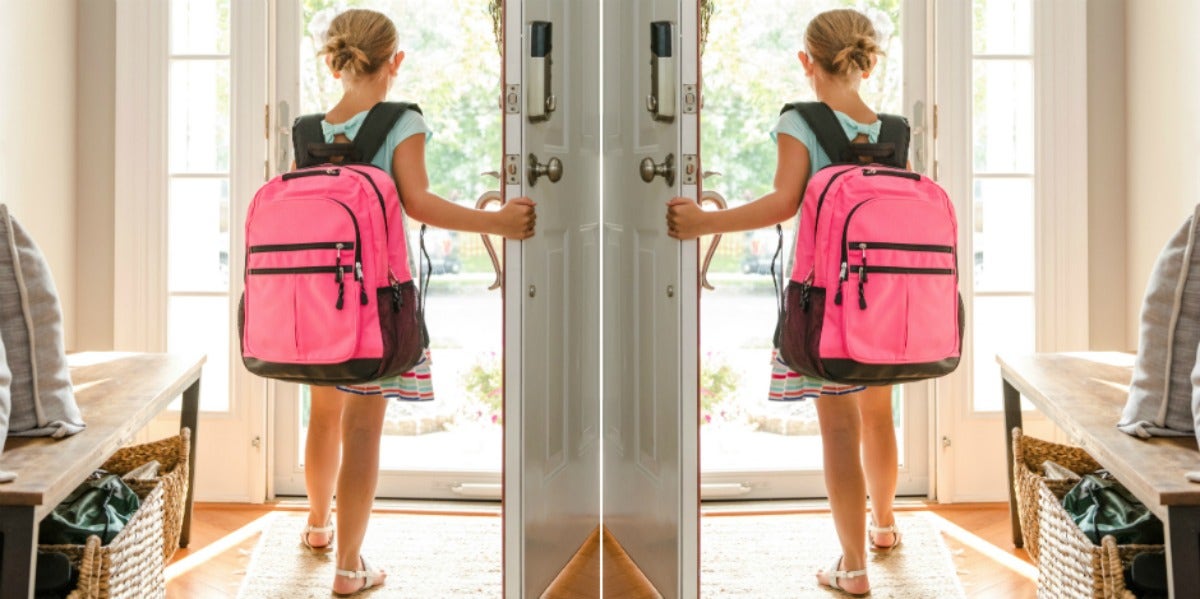If It's Not Safe For Adults To Go Back To Work, Then Why Are Kids Going Back To School?
Students and teachers should not need to risk their lives just to sit in a classroom right now.
 getty
getty By: Candice Zhang
Ever since the COVID-19 pandemic began earlier this year, world leaders have tried to “stop the spread.” In the United States, however, policymakers pressed for non-essential businesses to reopen and for citizens to return to “life as usual.”
Although I think we can all agree that returning to life as usual would be more than ideal at this stage, these pushes to return to work are only putting a vulnerable demographic at risk: school-aged children.
RELATED: How It Feels To Be A College Senior In The Midst Of The Coronavirus Pandemic
While researchers originally reported that the risk for COVID-19 increases with age, the tables have turned in the past few weeks. In fact, over 97,000 children in the United States tested positive for the coronavirus during the last two weeks of July.
Yet many schools across the U.S. will reopen their doors sometime this month, which leaves many teachers, parents, and concerned family members wondering if in-person learning is really the best option for children in grades K-12.
According to many experts, public schools should remain closed until a vaccine exists.
Not sure why they think that? Well, here are just a few reasons why:
1. Lack of social distancing measures.
"This is the first day of school in Paulding County, Georgia."
After a high school in Georgia resumed traditional classes, a student exposed the lack of social distancing and mask-wearing happening within the building. Furthermore, schools in several states claimed that numerous students tested positive for COVID-19 within days of reopening, forcing many schools to close and switch to distance learning with almost no notice.
Although some districts claim they will implement mask mandates, fully contained classrooms, and staggered scheduling, there’s no way to fully maintain social distancing measures within the majority of America’s public schools.
2. Students face additional exposures while traveling to school.
"All our donations are on their way! @salvationarmyus your team in Columbia is the best! #backtoschool #backpacks #schoolsupplies #stuffabus #salvationarmy #midlands #jtscares #jtsdodgeland"
According to the American Public Transportation Association, nearly 10 percent of public transit users are students — and this doesn’t even take into account the number of students who ride school-provided transportation.
Unfortunately, the use of any form of mass transit causes a student’s potential for exposure to skyrocketing as they enter several environments throughout the day. This means that the reopening of schools can lead to more issues in health and safety not only in the school environment but in other public places as well.
3. Current restrictions make in-person teaching less engaging.
With all the restrictions in classroom space and physical contact (which are good), students may not be engaged in class.
For example, students taking a biology or chemistry class will only get minimized labs with very little hands-on learning. This can impact the students’ ability to retain knowledge since nearly 40 percent of students learn through hands-on, or kinesthetic, approaches.
Furthermore, students are simply distracted due to the pandemic.
Their lives look very different, and these changes to their classroom environment can provoke anxiety and fear in students. Even teachers don’t feel confident about their students’ ability to learn this year — over 80 percent of teachers feel worried and uncertain about the upcoming school year actually helping students.
Although education is important, students and teachers should not need to risk their lives just to sit in a classroom right now.
Requiring in-person education right now not only increases the risk for exposure to everyone in the country, but it also forces teachers to severely adapt their teaching methods so that everyone can “stop the spread.”
In-person learning won’t be as engaging or effective right now, so why not go online and keep everyone safe?
Candice Zhang is a writer who focuses on relationships, health and wellness, and current events. For more of her current content, visit her author profile on Unwritten.
